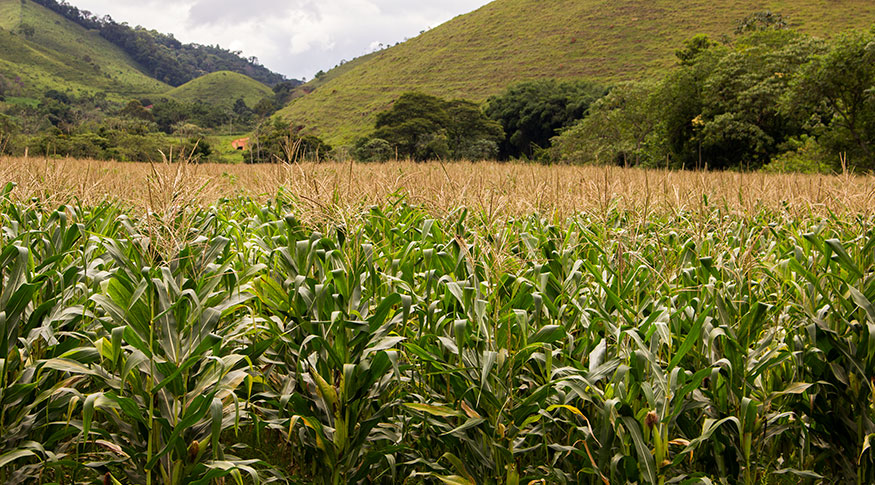Agricultural production
August estimate indicates decrease of 1.0% in 2021 harvest of 251.7 million tonnes
September 09, 2021 09h00 AM | Last Updated: September 12, 2021 11h07 PM

The estimated output of cereals, legumes and oilseeds in Brazil in 2021 has been reduced for the fifth month in a roll and, given resuts of August, production is expected to be 1.0% lower than in 2020. The 2021 harvest must reach 251.7 million tonnes, being 2.4 million tonnes below the record output of last year (254.1 million tonnes). Some of the main reasons for decline are the lack of rain and also frosts that swept over some of the main producing units in the end of July. Corn was the most affected commodity.
These data come from the Systematic Survey of Agricultural Production - LSPA, released today (9) by the IBGE. Rice, corn and soybeans are the three main products in this group; they account for 92.4% of the output estimate and for 87.6% of the area to be harvested.
“The agricultural year usually starts in September the previous year, together with the planting period. In order to plant, therefore, the producer needs a moist soil, but scarcity of rain in this period of 2020 caused delay in planting, which started in the second half of October. That ended up affecting the 2nd harvest of crop, whise “planting window” was reduced, making crops more dependent on the climate. Since rain was scarce, there was a big decrese in average yield, and, consequently, in production,” says Carlos Barradas, manager of the survey.
With an area to be harvested of 19.6 million hectares and an average yield of 4,499 kg per hecatere, the production of milk had its estimate reduced by 4.7% against the July estimate, amounting to 87.3 million tonnes. In relation to 2020, output is expected to be should be 15.5% smaller, though planted area and the area to be harvested recorded increases (6.8% and 6.2%, respectively). It is worth mentioning that some Federation Units. as it is the case of Paraná and Mato Grosso do Sul, were also affected by frosts in the end of July, with a decrease in productivity.
Soybean hit new record, 133.8 million tonnes
On the other hand, the output of soybean keeps increasing Soybean harvest, now already complete, hit 133.8 million tonnes, with an increase of 0.3% against the previous month’s estimate and of 10.1% against the 2020 harvest – which is equivalent to 12.2 million metric tons.
“This crop developed well in most states despite the significant delay in planting. Amapá and Alagoas were the states with biggest rises in August estimates, 41.3% and 150.6%, respectively. In Piauí it fell by 1.1%, due to climate problems in the crop cycle, with a decrease of 1.9% in the productivity of crops, but, against the previous year, the state produced 10.9% more than in 2020, Mr. Barradas highlights.
He adds that states that form the axis called Matopiba has caused the expansion of soybean crops and, this year, planted area increased by 73.4 thousand hectares in Piauí, by 46.2 thousand hectares in Maranhão, by 23.5 thousand hectares in Tocantins and by almost 80.0 thousand hectares in Bahia.
Central West is the only Major Region with a decrease against the previous year
The Central West was the only Major Region to reduce (-6.1%) its volume of production of cereals, legumes and oilseeds against the 2020 figure. This Major Region, however, is the biggest producer in Brazil (45.5% of the total), and is expected to produce a total of 114.4 million metric tons.
The South Region, which accounts for 30.8% of the national output, is expected to close 2021 with 77.5 million tonnes of grain; the Southeast, which produces 10.2% of the national overall, with 25.7 million tonnes; the Northeast (9.1%), with 23,0 million tonnes and the North (4.4%), with 11.1 million tonnes. Against 2020, the South is expected to record an increase of 6.0%; the Northeast, of 1.8%; the Southeast, of 0.1% and the North, of 0.9%.
Among the Federation Units, Mato Grosso led as the biggest national producer of grains, with a share of 28.2%, followed by Rio Grande do Sul (14.9%), Paraná (13.5%), Goiás (9.3%), Mato Grosso do Sul (7.7%) and Minas Gerais (6.1%), which, together, represented 79.8% of the national overall.
About LSPA
Launched in November 1972 aiming at addressing the demand of users for monthly short-term statistical information, the LSPA provides estimates of planted area, harvested area, amount produced and average yield of products selected based on criteria of economic and social importance for Brazil. It does not only monitor each crop investigated in the calendar year of reference, from the intention to plant up to the end of the harvest, but also presents the harvest forecast for the coming year, with surveys in the months of October, November and December. To see the data visit SIDRA.


















